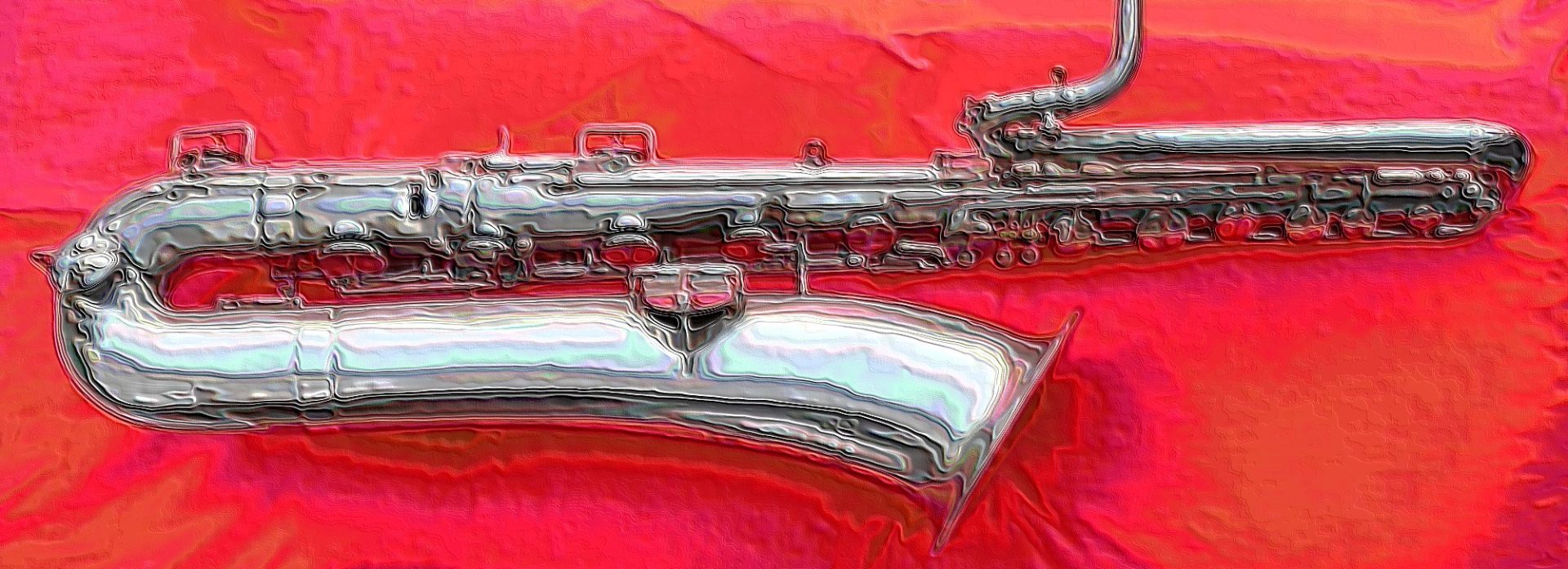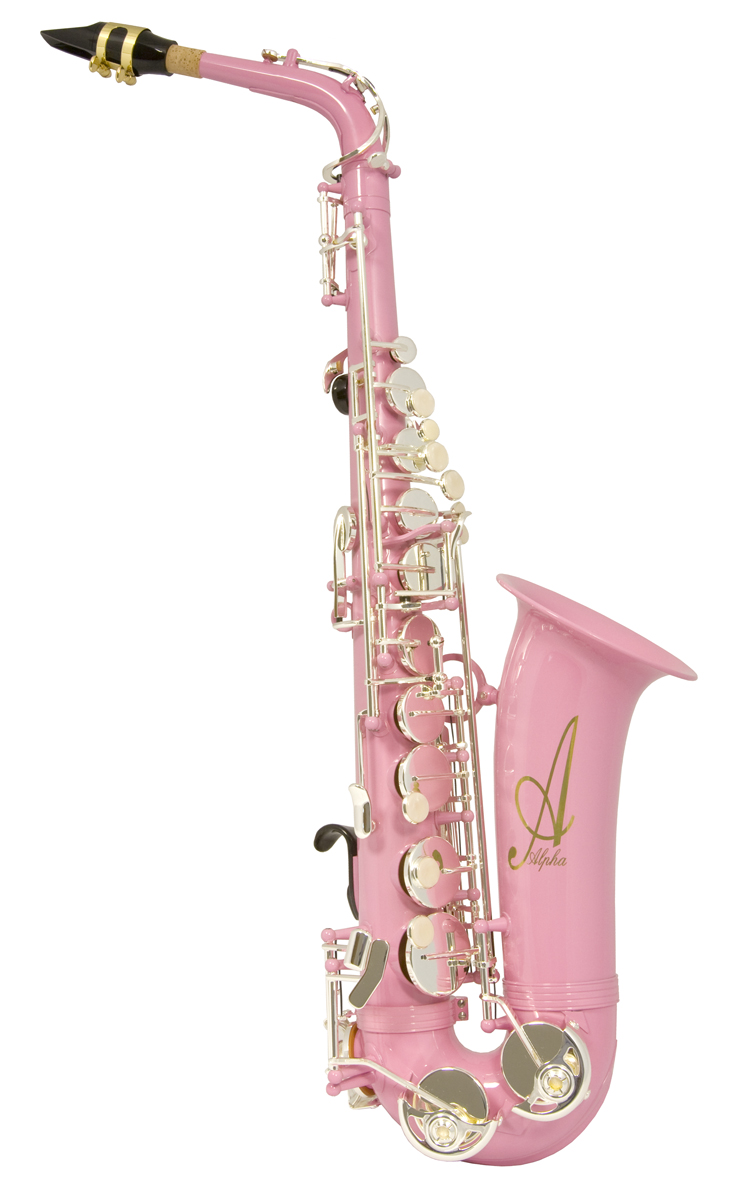A friend of mine asked me the other day if I had heard of these new student saxes called Alphasax. I had to admit, I hadn’t. Since I haven’t been actively teaching since I became ill, I have lost complete touch with what’s going on in the student sax world.
So I Googled Alphasax, and came upon their web page. According to the company, Alphasax is: “The unique alto sax designed for the younger or smaller player”. The company goes on to say…
The challenge was to design and manufacture an alto saxophone that would meet the needs of the smaller and younger players currently unable to learn to play the instrument, due to weight and hand positioning issues.
To enable future progression on the saxophone it was also essential that any new design would also fit in with established instrumental teaching publications by retaining fundamental fingerings and instrumental key of Eb.
Designed in London, UK, the revolutionary new Alphasax by Trevor James – with close cooperation of saxophone teachers, players and parents, has solved all the issues and now offers the opportunity to young players to fulfil their dream of learning to play the saxophone…..NOW! It also enables the parent and music teacher to capture the enthusiasm and gives a ‘heads up’ year or two musical and AB Grade advantage ready for when the young player eventually transfers to a standard (and heavier) alto sax.
Source: alphasax.co.uk
In the above photo of the prototype pink Alphasax with the silver coloured keys, you’ll notice there are some keys missing. The company did some very interesting research in ’07 &’08, and came up with the following factors that went into their design:
- They wanted to aim their new saxophone at anyone over the age of 7 who has been told that they are too small to play the conventional alto saxophone;
- Any new saxophone they designed needed to look like a regular alto;
- The weight of the horn needed to be reduced by 1/3, but the thickness of the bodytube needed to be preserved in order to maintain the tonal characteristics of a regular alto sax;
- The saxophone needed to have a minimum of a 2 octave chromatic range. Their research indicated that during the first couple of years of playing, students weren’t required to travel outside of this range of the horn;
- Because small hands found it difficult to reach certain keys on the conventional alto, while other keys were almost impossible to avoid, the instrument was nearly unplayable for these beginning students. In order to overcome this, the company redesigned the mechanisms to ensure that smaller fingers could reach the keys; thereby also reducing the weight of the horn.
In order to address the issues raised by this research, the company that designed Alphasax based the body tube on that of the Trevor James “Horn” alto saxophone, with redesigned mechanisms and tone hole positioning. Besides the weight difference, this is how Alphasax describes the differences between their horn, and a conventional alto saxophone:
- The left hand palm keys for top D#, E and F have been removed.
- The top D key has been adjusted to fit small hands.
- The low B & Bb keys have been removed.
- Redesigned G# and low C# keys are now easier to reach.
- The right hand side F# keys and side C key have been removed.
- Redesigned low D# and C keys are now easier to reach.
- The Alphasax™ retains a fully chromatic range from low C to high D.
- Bb bis and side Bb keys are retained
This is an interesting product, reminiscent of the Buescher Academy series saxophones, and the Martin Home Series. Both of these vintage, limited-range saxophones fared quite poorly. However, they were quite different to these new Alphasaxes, and not really all that comparable.
The Buescher Academy saxes, while available in soprano, alto, tenor, and baritone flavours, were restricted to playing in the key of C. No chromatics available. The Martin Home Series was a C melody saxophone minus the extra keywork, and only played to from C1 to C3.
It will be interesting to see if the Alphasax catches on. With the youth of today being much larger than they were just 1 generation ago, I’m not convinced that this product will fare well. However, I am looking at this through a pretty ethnocentric lens. Perhaps in other parts of the world where the youth haven’t undergone this enormous growth spurt, this new product will do well.





The old Buescher Academy horns were deisgned like this. I guess they just didn’t up the patent date on it. The Buescher Academy horns had those keys removed and fitted to “smaller” hand sizes by clustering them better. Buescher had this idea back in the 1920’s through the 1950’s, I guess it didn’t catch on, and now it’s back again.
🙂
I can’t see these appealing to individuals, who would know that their kid is going to outgrow it in a year or two. I can see why schools might like them, since they can upgrade the deserving kids at the end of the year and put new students on the beginner horns. However, I don’t think schools will want to buy them in pink for the most part. Lacquer and black, sure. Blue, red, green — maybe. But not pink.
Interesting what you say about the number of buttons. I hadn’t thought of that. Yes, I could see that being an issue for some kids. I wonder if the Aplphasax people took that into consideration?
I would like to think that there is little resistance in the horn. It should be easy-blowing and free. Intonation should be a snap too.
As I was playing my nickel-plated Klingsor tenor tonight, I was thinking how it was not built for a beginner. Everything about it screams: YOU BETTER HAVE YEARS OF PLAYING UNDER YOUR BELT BEFORE YOU TRY TO TACKLE ME. It has an amazing sound, but it is without a doubt, the most difficult horn to control that I own. When I finally learn all of its idiosyncrasies it will be worth it, but it is a steep learning curve. My biggest problem is that I don’t have enough energy/time to put in consistent practice on the sax, so I’m always backsliding.
I haven’t had a horn that just screamed “FOR EXPERTS ONLY”, but I sure have encountered mouthpieces like that. I get the impression some of Theo Wanne’s pieces are like that. They give incredible versatility, but the flip side is that they also give you enough rope to hang yourself. It would be like handing a newly licensed teenager the keys to the Ferrari, except that crashing and burning is somewhat less likely to kill someone.
My friend Ray was over last night and we were playing my tenors. He had a rough time on the Klingsor too. We both are of the opinion that the key heights need to be adjusted, and that will make it easier to work with.
I’m going to email the Hammerschmidt company and see if there is someone there who would be willing to dig into their files and find their old specs on what the key heights were when the horns left the factory. My tech did make some adjustments, but it obviously needs to be tweaked some more. Having the original heights might be very helpful. At least it would give him a place to start from.
The thing about the Klingsor is that it has a very narrow body tube and bell, compared to my other saxes. It is very obvious when it sits out with the rest of the tenors. I wonder if that would require it to have slightly different key heights than on other saxes?
I’m obviously quite stupid when it comes to this stuff. (Physics and math are not my strong suites.) I don’t worry about these types of things generally, I just give them to my tech, and say: Please make it work… 😉
Key heights are usually some fraction of the hole beneath. A smaller body tube means smaller holes, which in turn should (in theory) mean lower optimal venting.
Your plan is still the best — getting the factory specs. You might also want to ask what the original resonators were. If it had flat resos, you don’t want big domes without giving a little extra venting. Of course this does not apply to keys that don’t HAVE resonators, like the palm keys.
I like the idea but I can’t see it really catching on. I know I didn’t even start thinking of playing an instrument until the end of elementary school but that’s me. I was also (and still am) the kid that liked to press buttons so I know if I had the alpha sax back when I was learning and all my friends has a normal student model, I would probably wonder why my sax didn’t have the extra buttons.
I also wonder if these saxes are easy to blow on. Seeing as it’s a student model with less key work, you would think it would be easier for a beginner in terms of air used to play on.